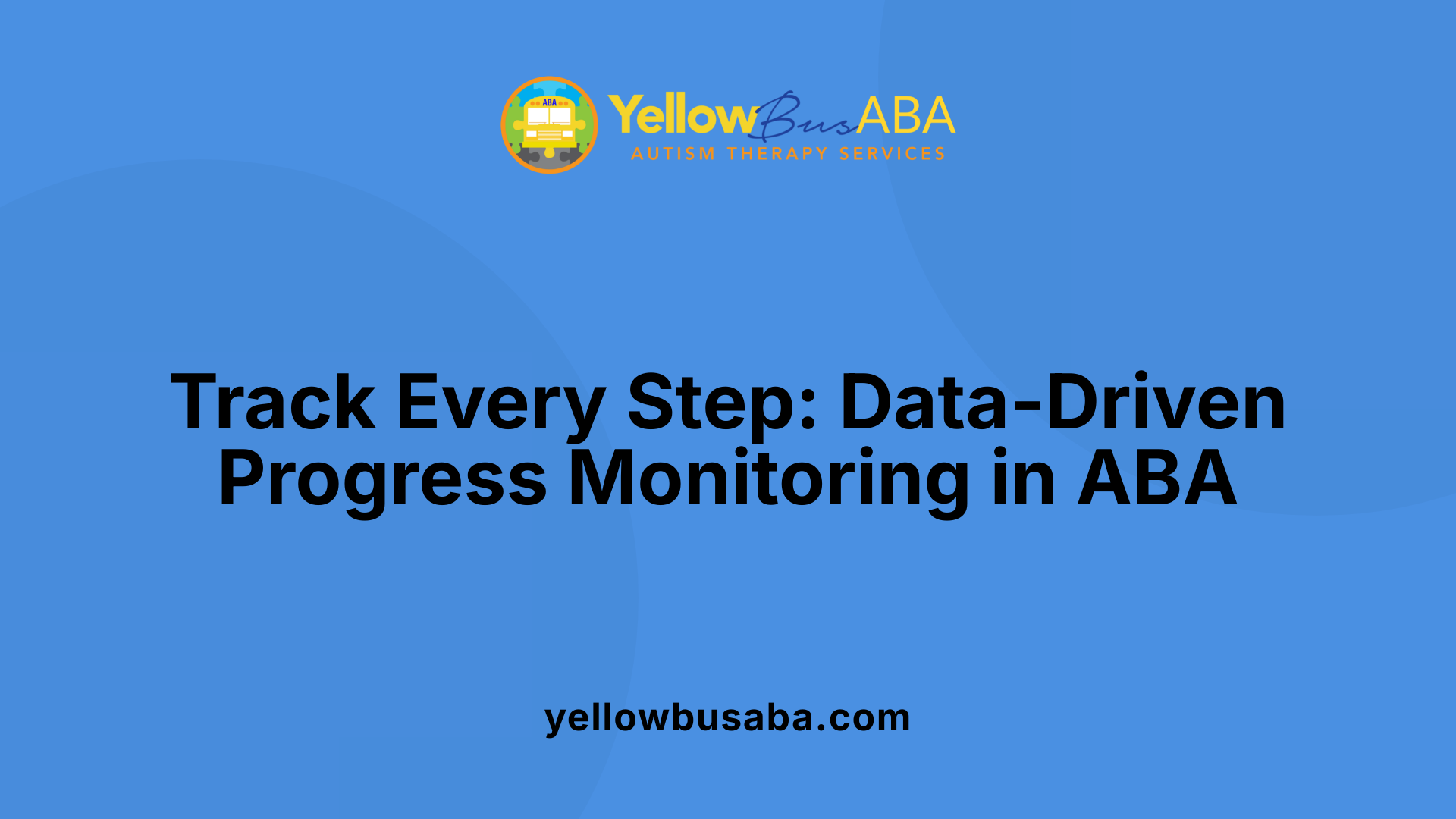Understanding Center-Based ABA Therapy in Autism Support
Applied Behavior Analysis (ABA) therapy, a scientifically validated intervention for Autism Spectrum Disorder (ASD), plays a vital role in teaching children with autism essential life skills. Center-based ABA therapy, in particular, offers a highly structured, supportive setting designed to optimize behavioral and educational outcomes. This article explores how center-based ABA therapy integrates evidence-based techniques, skilled professionals, and structured learning environments to support children with autism and their families effectively.
Applied Behavior Analysis: Foundations and Benefits in Autism Therapy

What is Applied Behavior Analysis (ABA) therapy and how does it help individuals with autism?
Applied Behavior Analysis (ABA) is a science-driven therapy that studies and modifies behavior to improve the lives of individuals with Autism Spectrum Disorder (ASD). It uses methods like positive reinforcement to encourage desirable behaviors, such as communication and social skills, while diminishing behaviors that may be harmful or disruptive.
Definition and principles of ABA therapy
ABA therapy focuses on understanding the relationship between behavior and the environment to promote meaningful behavior change. Professionals design individualized plans based on thorough assessments that include observations and standardized tools. Structured interventions, such as Discrete Trial Training (DTT) and Natural Environment Training (NET), break down complex skills into manageable steps tailored to each individual's needs.
Goals of ABA in treating autism
The core goals of ABA include enhancing communication (both expressive and receptive), social interaction, and everyday living skills. Center-based ABA therapy provides a structured setting that includes social group activities to develop skills like turn-taking and perspective-taking. Additionally, family involvement is emphasized by offering training and guidance, ensuring reinforcement of learned skills at home.
Evidence supporting ABA effectiveness
Extensive research validates ABA as an evidence-based practice for ASD treatment. Studies consistently demonstrate that increased therapy intensity leads to greater improvements in social, communication, and adaptive skills. Data collection methods—tracking frequency, duration, and latency of behaviors—help to monitor progress, adjust interventions, and maintain gains over time. Such scientific backing supports ABA's role as a centerpiece in autism therapy, promoting independence and improved quality of life.
Who Provides ABA Therapy? Qualifications and Expertise of Practitioners

Who typically provides ABA therapy and what qualifications do these professionals have?
ABA therapy is mainly delivered by a team of skilled professionals including Board Certified Behavior Analysts (BCBAs), licensed behavior analysts, and Registered Behavior Technicians (RBTs). These practitioners typically hold advanced degrees such as master's or higher in psychology, education, or related fields with a specialized focus on applied behavior analysis.
Roles of BCBAs, RBTs, and licensed behavior analysts
- Board Certified Behavior Analysts (BCBAs): These professionals design, supervise, and adjust individualized treatment plans. They analyze behavioral data to guide therapy and train other team members and family.
- Registered Behavior Technicians (RBTs): RBTs work directly with clients implementing treatment programs under BCBA supervision. They handle daily therapy sessions, data collection, and assist in skill development.
- Licensed Behavior Analysts: In jurisdictions requiring licensure, these professionals meet state criteria in addition to national certification to provide behavioral services.
Required education and certifications
Most BCBAs and licensed analysts have master's-level training with specialized coursework and complete 1,500 to 2,000 hours of supervised fieldwork. Certification from the Behavior Analyst Certification Board (BACB) ensures standardized competence in ABA principles and ethical practice.
Skills and training in behavioral assessment and intervention
Practitioners are trained in behavioral assessment methods including observations, interviews, and standardized tools. They collect and analyze data on behavior frequency, duration, and latency to tailor interventions like Discrete Trial Training and Natural Environment Training. Their expertise ensures therapy focuses on meaningful behavior change, supporting improved communication, social skills, and independence for individuals with ASD.
Regular continuing education is essential for maintaining credentials and staying current with advancements in evidence-based ABA methodologies.
Key Techniques of ABA Therapy in Structured Learning Settings

What are the common techniques used in ABA therapy to support behavioral changes?
ABA therapy employs several effective techniques to promote positive behavior change in individuals with ASD. One fundamental strategy is positive reinforcement, which encourages the repetition of desired behaviors by immediately rewarding them. This can range from verbal praise to tangible rewards, fostering motivation and engagement.
Discrete Trial Training (DTT) and Natural Environment Training (NET)
Two widely used instructional methods in ABA are Discrete Trial Training (DTT) and Natural Environment Training (NET). DTT breaks skills into small, teachable steps practiced in a highly structured setting with clear instructions and immediate reinforcement. NET, in contrast, leverages natural settings and everyday situations to teach skills, enhancing generalization across contexts.
Modeling, Prompting, Chaining, and Behavior Reduction Strategies
Modeling involves demonstrating a behavior to the learner, while prompting assists with cues to encourage correct responses, fading out prompts gradually to promote independence. Behavior chaining teaches complex skills by linking simpler behaviors step-by-step. To reduce problematic behaviors, strategies such as extinction (withholding reinforcement for unwanted behaviors) and redirection (guiding attention to appropriate behaviors) are used.
Use of Visual Supports and Technology
Visual supports like schedules, token boards, and Picture Exchange Communication System (PECS) play a critical role in facilitating understanding and communication. Additionally, technology tools—such as interactive games, communication apps, and timers—enhance engagement, support learning, and enable precise data tracking, which informs ongoing treatment adjustments.
Together, these techniques form a comprehensive, evidence-based approach tailored to each individual's needs and implemented within structured, supportive learning environments.
Creating Individualized Treatment Plans: Tailoring ABA Therapy to Each Child

How does ABA therapy adapt to meet the individual needs of each person with autism?
ABA therapy starts by conducting thorough assessments using observations, interviews, and standardized tools. These assessments highlight each child's unique strengths, challenges, and developmental stage, forming the foundation for a personalized treatment plan.
The therapy sets SMART goals—Specific, Measurable, Achievable, Relevant, and Time-bound—in critical skill areas like communication (including both expressive and receptive language), social skills, academics, and independence. These goals help focus therapy sessions on meaningful progress tailored to the child's needs.
Individualized Education Plans (IEPs) are crafted to reflect these SMART goals and are regularly reviewed and adjusted based on ongoing data collected during therapy sessions. Data collection methods such as frequency, duration, and latency recording provide objective measures to monitor growth and identify areas needing adjustment.
Flexibility is key in ABA; treatment plans are not static but evolve in response to the child's progress and emerging needs. This ensures that therapy remains effective and aligned with the child's developmental trajectory.
Family involvement further personalizes therapy. Families observe sessions, receive training, and learn strategies to reinforce new skills at home, fostering consistency and enhancing outcomes.
By combining comprehensive assessment, tailored goal-setting, data-driven adjustments, and active family participation, ABA therapy delivers a customized approach that maximizes each child's potential.
The Structured Environment of Center-Based ABA Therapy

Dedicated Learning Spaces and Routines
Center-based ABA therapy is delivered in settings specifically designed to support structured learning. These centers provide dedicated learning spaces that minimize distractions, allowing children to focus on developing essential skills. Established routines guide daily activities, fostering a predictable environment that helps children feel secure.
Clear Expectations and Tailored Activities
A hallmark of these programs is the establishment of clear expectations tailored to each child's abilities and needs. Activities are carefully designed to align with individualized treatment plans, promoting skill acquisition at an optimal pace. This structured approach ensures that therapy is both engaging and effective.
Reducing Anxiety and Promoting Engagement Through Environment Design
The center-based environment is thoughtfully arranged to reduce anxiety. By providing familiar routines and predictable settings, children experience less stress and are more open to learning. Additionally, incorporating tailored activities and visual aids helps maintain attention and motivation, enhancing overall engagement throughout therapy sessions.
Promoting Social Skills Through Peer Interactions and Group Activities

How does center-based ABA therapy promote social skill development?
Center-based ABA therapy actively fosters social skills such as turn-taking, joint attention, and perspective-taking. These abilities are essential for effective communication and relationship-building among children with Autism Spectrum Disorder (ASD). By embedding these skills into therapy, children learn to engage with others meaningfully and develop foundational social competencies.
What role do group sessions and peer interactions play in therapy?
Group activities are integral to center-based ABA therapy, providing structured opportunities for peer interaction. In these sessions, children practice social exchanges under the guidance of trained professionals, allowing them to apply learned skills in naturalistic settings. This not only helps improve social behaviors but also encourages cooperation and empathy.
How do children acclimate to social settings and diverse situations?
The center-based environment exposes children to varied social scenarios, helping them acclimate to different people and settings. Through repeated, supported social interactions, children reduce their anxiety and gain confidence navigating social contexts. This gradual exposure supports generalization of social skills beyond the therapy center, enhancing adaptability in everyday life.
Parental and Family Involvement in Center-Based ABA Therapy

Training Parents to Reinforce Skills at Home
A vital element of center-based ABA therapy is equipping parents with the tools and knowledge necessary to support their child's development beyond the therapy center. Parents receive tailored training that enables them to effectively reinforce skills learned during therapy sessions in the home setting. This ongoing support helps generalize behaviors and ensures consistency across environments.
Observing Sessions and Participating in Therapy
Family members are encouraged to observe therapy sessions, offering firsthand insight into the techniques used and the child's progress. This direct involvement fosters understanding and empowers families to actively participate in their child's learning process. In some cases, parents may join therapy activities, further solidifying their role as partners in intervention.
Collaborative Approach Between Family and Therapists
Center-based ABA therapy emphasizes a partnership model where therapists and families communicate regularly. This collaboration ensures treatment plans are individualized and responsive to the child's evolving needs. Through open dialogue and shared goals, families and professionals work together to enhance outcomes and support the child's overall quality of life.
The Role of Data Collection and Progress Monitoring in Therapy Success

What Are the Common Data Collection Methods in ABA Therapy?
Data collection in center-based ABA therapy involves recording specific aspects of behavior such as frequency (how often a behavior occurs), duration (how long a behavior lasts), and latency (the time between a prompt and the behavior). These detailed measurements provide precise information on the child's progress and areas needing attention.
How Are Baseline Assessments and Standardized Tools Utilized?
Before starting therapy, baseline assessments establish the child's initial skill levels and behavior patterns. Standardized tools and adaptive skills evaluations complement these observations to create a comprehensive understanding of the learner's needs. This ensures that treatment plans are personalized and effectively targeted.
How Does Data Influence Adjustments in Treatment Plans?
Data collected during sessions is continuously analyzed to monitor progress. If certain interventions are less effective, therapists adjust goals, strategies, and intensities accordingly. This dynamic approach ensures that therapy remains responsive and focused on measurable improvements.
Through systematic data collection and progress monitoring, center-based ABA therapy maintains a high standard of individualized care, contributing significantly to successful outcomes for individuals with ASD.
Specialized Equipment and Professional Teams in Center-Based Therapy Centers

Role of BCBAs, Registered Behavior Technicians, Speech and Occupational Therapists
Center-based ABA therapy benefits from a team approach, involving Board-Certified Behavior Analysts (BCBAs), Registered Behavior Technicians (RBTs), speech therapists, and occupational therapists. BCBAs develop and oversee individualized treatment plans using scientific methods. RBTs implement daily interventions and collect critical data. Speech therapists focus on enhancing expressive, receptive, and pragmatic communication skills, while occupational therapists work on fine motor skills, sensory processing, and independence.
Use of Technology: Visual Schedules, Timers, Communication Apps, Interactive Games
Modern ABA centers incorporate various technological tools to enrich therapy. Visual schedules and timers make routines predictable, decreasing anxiety and improving engagement. Communication apps facilitate expressive abilities, especially for non-verbal children. Interactive games add a dynamic, motivating element, encouraging participation and reinforcing behavioral goals.
Importance of Specialized Facilities and Equipment
Centers offer a structured and supportive setting designed specifically for learning and behavioral improvement. Dedicated spaces are equipped with materials tailored to foster skill development and manage behavior effectively. Specialized equipment enhances therapy sessions by providing sensory supports and enabling individualized interventions that adapt to each child's needs. This environment maximizes learning potential and promotes consistent progress.
The combined expertise of professional teams and the integration of technology in specialized settings make center-based ABA therapy a comprehensive, effective approach to supporting individuals with ASD.
Comparing Center-Based ABA Therapy with Home-Based Models

Benefits of Center-Based Therapy: Structure, Consistency, Socialization
Center-based ABA therapy offers a highly structured and consistent setting that is specifically designed to support learning and behavior change. These centers provide dedicated learning spaces with specialized equipment and routines that promote engagement while reducing anxiety. The structured environment helps establish clear expectations and tailored activities, enabling more efficient skill acquisition. Moreover, group activities and structured social interactions within the center foster opportunities for children to practice social skills such as turn-taking, joint attention, and perspective-taking in a supportive setting.
Advantages of Home-Based Therapy: Comfort, Natural Environment
Home-based ABA therapy, on the other hand, takes place in the child’s familiar surroundings and daily routines. This comfort can enhance the child’s willingness to engage and allow therapy to be integrated naturally into everyday life. The natural environment supports generalization of skills across various contexts, and parents often play a more active role in the treatment process. However, home-based models may lack the consistency and social interaction opportunities that specialized centers provide.
How Center-Based Therapy Enhances Learning Efficiency and Social Skills
Center-based settings are staffed by trained professionals, including Board-Certified Behavior Analysts, Registered Behavior Technicians, speech, and occupational therapists, ensuring interdisciplinary support. The controlled environment supports efficient data collection and systematic progress monitoring which leads to regular treatment plan adjustments for optimal outcomes. Importantly, the center setting promotes peer interaction through group sessions, which is critical for developing social competencies. These benefits combine to make center-based ABA therapy particularly effective for accelerating learning rates and improving social communication compared to home-based therapy.
Center-Based ABA Therapy: Advancing Autism Support Within Structured Environments
Center-based ABA therapy represents a comprehensive, evidence-based approach tailored to the unique needs of individuals with autism. Its strength lies in providing a highly structured and supportive environment staffed by skilled professionals who employ scientifically validated techniques and continuous data monitoring. The integration of socialization opportunities, family involvement, and individualized treatment plans ensures meaningful progress in communication, social skills, and independence. As research continues to validate its efficacy, center-based ABA therapy remains a cornerstone in advancing educational and developmental outcomes for children with autism within structured learning settings.
References
- Center-Based ABA Therapy Curriculum
- Top Benefits of Center-Based ABA Therapy: Guide for Parents
- Center-Based ABA Therapy Programs for ASD
- Why Customized ABA Therapy Plans Matter
- Customized In-Home ABA Therapy – What Families Should ...
- How to Become an ABA Therapist - School of Education
- How to Become an Applied Behavior Analyst (ABA) Therapist
- Board Certified Behavior Analysts (BCBA)
- Your Complete Guide to Becoming an ABA Therapist



.jpg)

.avif)
